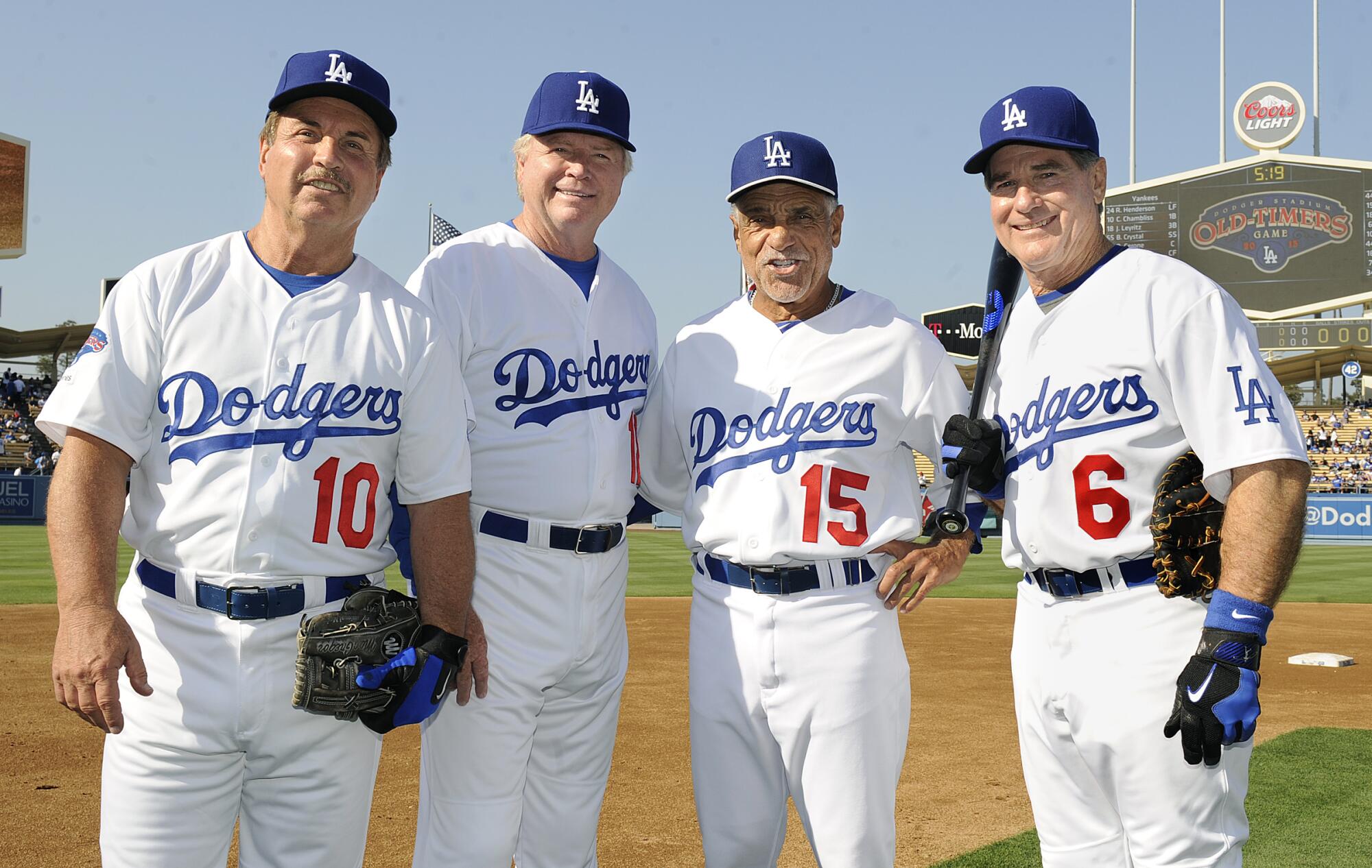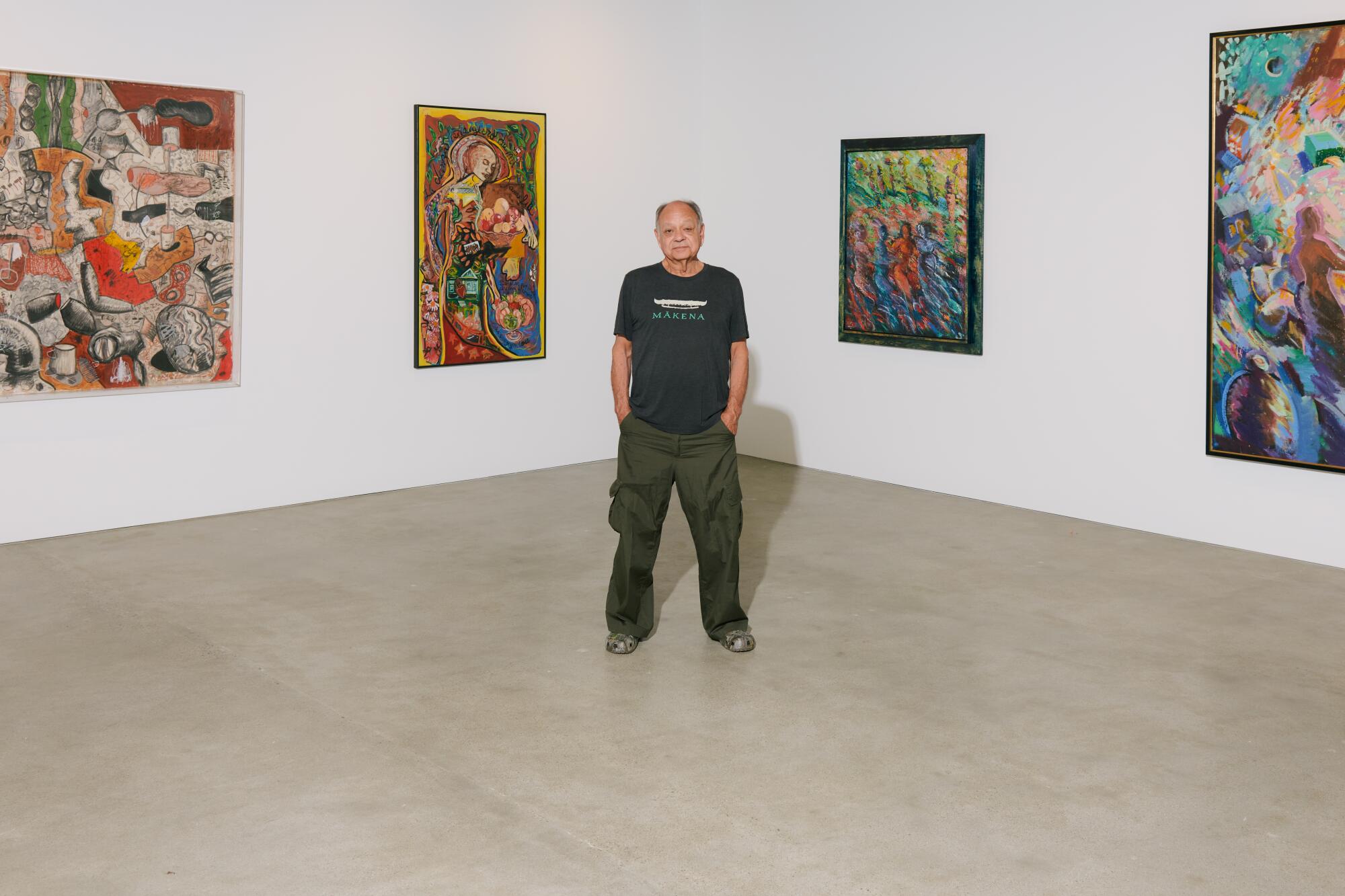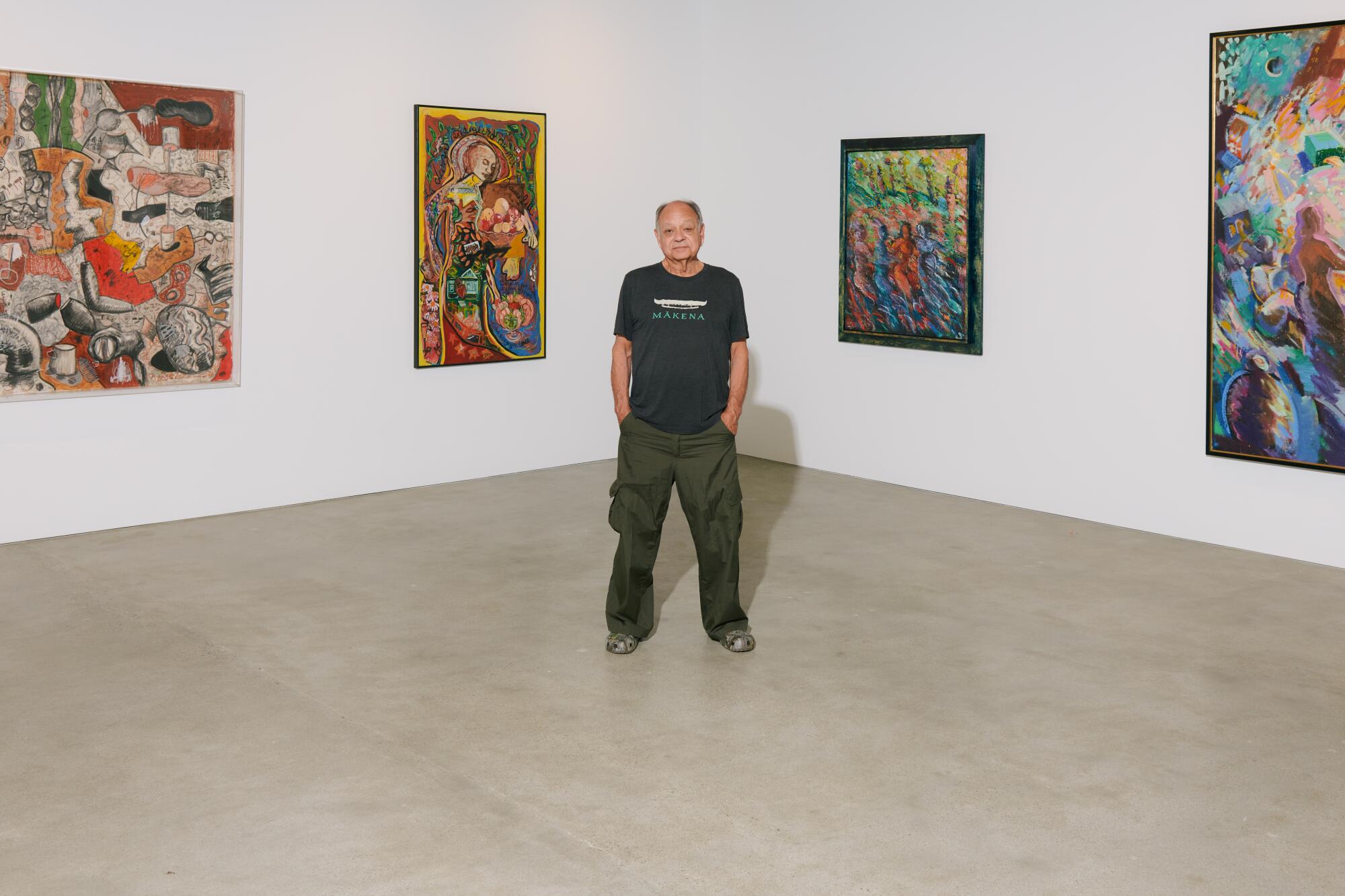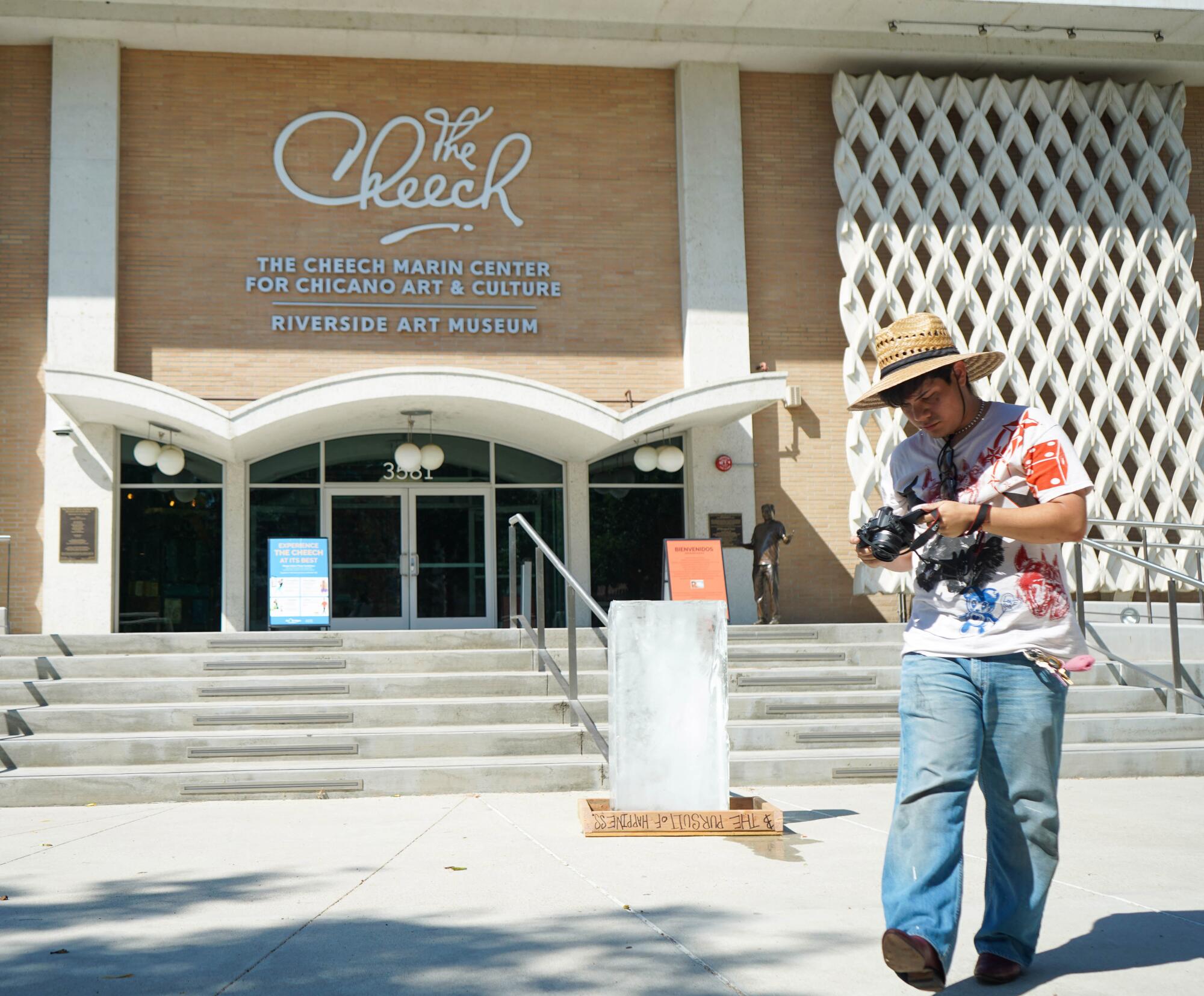How former shortstop Bill Russell reconnected with the Dodgers
The fourth in an occasional series of profiles on Southern California athletes who have flourished in their post-playing careers.
Before there was Mookie Betts, there was Bill Russell.
An outstanding outfielder in his first three major league seasons, Russell moved to the infield full time in his fourth year. It was a disaster.
“It was something I lost a lot of sleep over,” said Russell, who led the majors with 34 errors that year. “After the season, I just collapsed for a few weeks.”
Then he picked himself up and went to work on getting better and in his second year as a shortstop he led the majors with 560 assists, led the National League in defensive WAR and made the first of three all-star teams.
He went on to play more games for the Dodgers than any player in Los Angeles history.
It was a remarkable career, one that hardly needed a second act. But even after he left the stage, Russell never left the theater. Six months after his last at-bat — he struck out as a pinch hitter in the final week of the 1986 season — Russell was back in uniform as the team’s bench coach.
He later managed in the Dodgers’ minor league system, replaced Tommy Lasorda in that job at the major league level and, for the past 13 years, has worked in the team’s community relations department, coaching youth camps and appearing at schools, fan fests and other events. Since 2002 he’s also served as an umpire observer, partly because the job gets him a good seat behind the plate at Dodger Stadium.
If the team were to a pick a Mr. L.A. Dodger, someone emblematic of the team’s history and values since moving to Southern California, the soft-spoken, humble Russell, a Dodger for nearly half a century, would have to be in that conversation.
But it was his dedication to mastering the switch from the outfield to shortstop — becoming the first prominent player since Honus Wagner to make the move — that literally changed the direction of the franchise. If he hadn’t made it work, the Dodgers may never have had the courage to turn a minor league outfielder named Davey Lopes into a second baseman, where he became Russell’s double-play partner.
If he hadn’t made it work, the Dodgers may never have tried pushing a scatter-armed third baseman named Steve Garvey across the diamond to first, opening up the position to Russell’s right for Ron Cey. The resulting infield of Garvey, Lopes, Russell and Cey played together for 8 ½ seasons, longer than any quartet in baseball history, winning four pennants and a World Series.
“Each one of us had different talents,” Russell said. “It was tough at first but all of a sudden we started having success. It’s four brothers.”
From left, Ron Cey, Bill Russell, Davey Lopes and Steve Garvey pose before an old-timers game at Dodger Stadium in 2013. The infield quartet won four pennants and a World Series together.
(Wally Skalij / Los Angeles Times)
Now Betts, a six-time Gold Glove-winning outfielder, has mastered the move too, helping the Dodgers to the cusp of their 12th division title in 13 seasons. However if Betts perfected the shift, Russell pioneered it.
“He was a great athlete,” said Steve Sax, Russell’s double-play partner his last five seasons. “He was maybe the fastest guy in the organization. The whole genesis of being able to move guys around was the thought they’re so athletic, why can’t they make the transition?
“And he proved that to be true.”
At 76, Russell is nearly four decades removed from his last of his 2,181 big-league games, all with the Dodgers. But he’s still fit, not far off his playing weight of 175 pounds. And while he was once among the fastest players in the majors, he now moves at a purposeful saunter rather than a sprint. Wire-rim glasses crease his once-boyish face and the mop of straw-blond hair he once tucked under his cap has gone white, leaving him looking more like a college English professor than a once-iconic athlete.
“I just enjoyed going to the park and being with the guys. They just make you feel young again,” said Bill Russell, who turns 77 in October.
(Robert Gauthier / Los Angeles Times)
What hasn’t changed is his love for a game that has been his life and for a team that has become his family.
“I just enjoyed going to the park and being with the guys. They just make you feel young again,” said Russell, who often wears a wry smile that suggests he’s in on a joke no one else knows about.
“Billy’s very special,” said Peter O’Malley, the Dodgers’ owner and president throughout much of Russell’s career.
“He was stable. Popular with the fans for sure. He deserves more credit that he’s received.”
Russell grew up a short drive from both the Missouri and Oklahoma state lines in the kind of nondescript Kansas town where everybody knew their neighbors and hard work wasn’t a virtue, it was an expectation.
The middle child in a family of five children, he attended a high school so small it didn’t have a baseball team. So he played basketball during the winter and baseball on sandlots and with American Legion teams during the summer. He was the kind of player scouts once described as “an athlete,” meaning he was smart enough and talented enough to excel at any position, though the Dodgers listed him as an outfielder when they selected him in the ninth round of the second amateur draft in 1966.
He gave most of his $14,000 signing bonus to his parents, minus the money he needed to buy a second-hand Chevy like the one his best friend drove.
Russell shot up the minor-league ladder, playing just 221 games before making the jump from Class A Bakersfield to the majors in 1969, doubling in his first big-league at-bat.
The adjustment from the minors to the majors was far easier than the change from the tiny mining town of Pittsburg, Kan., to the technicolor sprawl of Southern California.
“Coming to Los Angeles, you’ve got to be kidding me. A big city like this?” said Russell, who had rarely traveled more than 30 miles from Pittsburg before signing with the Dodgers. “My town was only 10,000 people so I had to grow up fast.
“I’m 20 years old, I’m in the major leagues and the minimum salary is $10,000. It wasn’t even $1,000 a month. But that was more money than I’d ever thought of. And I’m playing in Hollywood.”
After playing 18 seasons with the Dodgers, Bill Russell managed the ballclub from 1996-98.
(Genaro Molina / Los Angeles Times)
Playing exclusively in the outfield, too, although Monty Basgall, a fellow Kansan and the former minor league infield instructor who scouted Russell as an athlete, was already plotting the move to shortstop, the most challenging defensive position after catcher.
“Shortstop is a difficult position,” said Derrel Thomas, a former teammate who played everywhere but pitcher during a 16-year big-league career. “A lot of people don’t give Monty Basgall any credit for what he did helping with the infielders.”
After some preparation in the instructional league and the minors, Russell made his major league debut at shortstop on the final day of the 1970 season, then played 47 games as a middle infielder a year later. But the move didn’t become permanent until Russell’s fourth season when he replaced an aging Maury Wills.
“I wasn’t in a position to say anything, really,” said Russell, who still speaks with a noticeable Midwestern accent.
“I had doubts about it, no question. But I figured my longevity in the big leagues, if I had [any], would come with moving to the infield.”
In fact, the move nearly ended his career. Russell made his first poor throw seven games into the season and by the all-star break he had as almost as many errors as extra-base hits. By then, he was also looking over his shoulder, expecting the Dodgers to put an end to the experiment.
“I’m surprised they didn’t,” he says now. “The fans got involved too. It wasn’t a standing ovation when I was coming back to the dugout after making some errors.
“At that time people brought transistor radios to the stadium. You could hear [Vin Scully] doing the game. I could hear him say something about me at shortstop. Talk radio was just coming on board and they were on me. It was a lot of negative stuff.”
Quitting, however, wasn’t an option.
“Maybe I was too dumb, I don’t know,” Russell said with a shrug. “I never thought about giving up or going back home. What am I going to do back home? I did say to myself, ‘I’m going to show these people I can play this position.’
“And I did. For 13 years.”
Through hard work and determination, Russell turned his fielding from a liability into an asset and the Dodgers began to win, reaching the World Series four times over the next nine seasons. And while Russell never won a Gold Glove — he twice led the majors in errors — he finished in the top five in fielding percentage by an NL shortstop three times, was in the top five for putouts four times and in the top three for assists six times.
He was understatedly brilliant, so much so that Cincinnati Reds’ shortstop Dave Concepcion once mocked Russell’s critics saying he didn’t know who the best fielder was “but I sure watch Bill Russell in the playoffs a lot.”
“He would never quit. Never,” O’Malley said. “Making that transition at the major league level, he deserves extraordinary credit for that.”
Almost lost in the focus on his defense was the fact Russell was a tough out, hitting better than .271 six times and excelling in clutch situations.
“That went all the way back to high school,” said Russell, who hit the shot that took his underdog team to the final of the Kansas state tournament. “It’s just a calmness. You can’t describe it. You can’t teach it. It is something that comes over you and you get a calm feeling that you’re going to succeed.”
As a high school infielder at Arroyo High in El Monte, James Baker was given his choice of uniform numbers. He didn’t have to think long before selecting one.
“I wore No. 18,” he said. “Because of Bill.”
It was the same number he had worn in Little League and American Legion ball.
“He was Mr. Clutch,” Baker, 61, said of Russell. “He was the dean of the infield.”
“The great thing about Bill Russell,” added Rick Zubiate, 57, Baker’s brother-in-law “is he wasn’t flashy. He made all the plays he was supposed to. Not only that, he had a presence and he commanded everybody around him to be better and expect more of themselves.”
Russell may be little more than a face on an old baseball card to Generation Z. But for children of the ‘60s like Baker and Zubiate, he remains the archetypal Dodger, one with a Dodger Blue resume that is unassailable. Which is why Baker and Zubiate braved rush-hour traffic last week to drive to Ontario, where Russell was appearing at an event for the Dodgers’ newest minor league affiliate.
“I loved him,” Baker said after asking Russell for an autograph.
And what’s not to love? He played more games and has more World Series at-bats than any player in L.A. Dodger history. He trails only Willie Davis and Garvey in hits and only Clayton Kershaw has matched Russell’s 18 seasons at Dodger Stadium.
Dodgers manager Tommy Lasorda, right, hugs Bill Russell in the dressing room after the Dodgers beat the Phillies, 6-5, in Game 3 of the 1977 NLCS.
(Associated Press)
But he also managed in the team’s minor league system, was the bench coach under Lasorda for seven years, then managed the big-league team for parts of three seasons, posting the fourth-best winning percentage by a manager since the franchise left Brooklyn. And he still pulls on his old uniform — with the bright red 18 over his Dodger blue heart — several times a year to join former teammates including Garvey, Sax and Steve Yeager in reminiscing with fans at fantasy camps and clinics.
“We have fun out there,” he said. “People come from all over the country. [It’s] like you’re still involved in the whole scene of being a major league player.”
If the speed and power of Willie Mays is synonymous with the San Francisco Giants and the style and grace of Ted Williams is emblematic of the Boston Red Sox, Russell’s blue-collar work ethic and country-boy humility is the embodiment of the Dodgers since they moved to Southern California.
“Quintessential Dodger?” O’Malley said. “Absolutely right. From start to end, he deserves the credit. He was respected and liked by everybody.”
Russell stood out, O’Malley said, partly because he blended in.
“He was quiet,” he said. “But keen sense of humor. If he wanted to make a point or be heard, he could nail it with a comment. It was pretty darn funny.”
Yet Russell’s silent excellence often went unappreciated. A .263 lifetime hitter who had fewer home runs in his career than Shohei Ohtani has this year alone, he received just three Hall of Fame votes the only time his name appeared on the ballot. For a time, even his loyalty to the Dodgers went unrequited; for years after his last game as manager Russell felt unwelcome at Dodger Stadium, the result of a toxic stew of bruised egos, Machiavellian maneuvering and corporate mismanagement.
It began midway through the 1996 season when Lasorda, the manager who had groomed Russell in the minors then won with him in the majors, had a heart attack. A month later Lasorda stepped down and Russell took over on an interim basis, guiding the Dodgers to a playoff berth.
That earned him the job full time but it didn’t earn him unquestioned support throughout the organization. The low-key Russell was a striking contrast to the colorful and bombastic Lasorda, more Mr. Rogers than Bobby Knight.
“He’s named the manager following Tommy. That’s not easy,” O’Malley said. “And he did it in his own way.
“But things didn’t work out. Following Tommy was not an easy task.”
Critics who had preferred hitting coach Reggie Smith, Mets manager Bobby Valentine or triple A manager Mike Scioscia — all former Lasorda pupils — over Russell quietly worked to undermine him and 74 games into his second full season as manager, Russell was fired by the team’s new overlords at Fox, who also sacked general manager Fred Claire, replacing him with Lasorda.
By then a major rift had developed between Russell and his former manager, who privately questioned Russell’s performance to management and publicly questioned his qualifications to manage. As a result many pointed fingers for the firings at Lasorda, who strongly denied being involved.
Bill Russell observed umpires on behalf of MLB during Sunday’s Dodgers-Giants game at Dodger Stadium.
(Robert Gauthier / Los Angeles Times)
Either way, the relationship was irrevocably broken.
Russell left with a .537 winning percentage over parts of three seasons, a better mark — albeit over a far shorter span — than the one that took Lasorda to the Hall of Fame. After firing Russell, the Dodgers never made the playoffs under Fox, with the seven-season postseason drought matching the team’s longest since the late 1960s-early 1970s.
The hard feelings have softened some with the passing of both time and Lasorda, who died in 2021. (Russell, pointedly, was not invited to the funeral; Scioscia, Valentine, Garvey and Cey were.)
“I knew him better than anybody. I was like his son,” Russell said earlier this month, sitting at a patio table near the neat two-bedroom Valencia house where he’s lived for 20 years.
“I don’t want to bad mouth him but he wanted to keep managing. He just couldn’t accept not being there. That’s just the way it was.”
The slight wounded Russell, who took off his Dodger uniform for what he thought would be the final time. O’Malley, who was in the room when Bob Graziano, the former banker Fox put in charge of the team, fired the manager, invited Russell back to the stadium later that season. But the place where he had grown from a boy to man wasn’t the same.
So he went on to work as an advisor with a team in Taiwan, spent a season as bench coach in Tampa Bay and managed in the minors for both the Rays and Giants.
None of it felt comfortable.
“I was in the Dodger organization 30 years,” he said. “To go somewhere else, it wasn’t right.”
After managing the Shreveport Swamp Dragons to a last-place finish in the Texas League in 2001, he returned to Southern California — and Dodger Stadium — as an umpire observer for Major League Baseball, a job that lets him sit behind the plate and watch games.
As if he could imagine doing anything else.
“He’s brought a different perspective because he played at the highest level and he managed,” said Matt McKendry, MLB’s vice-president of umpire operations. “But, you know, Bill loves being at the ballpark and if he wasn’t doing what he’s doing for us, I think he’d be at Dodger Stadium almost every night anyway.”
Because for Russell it’s never been a stadium. It’s home.



